Last Updated on August 18, 2023 by Jo Fitzsimons
Did you know that there are over 400 types of Italian cheese? A little overwhelming, right? These cheeses vary greatly in their taste and texture depending on regional production methods, the type of milk used, and how long they are aged.
Some Italian cheeses are eaten on their own as part of an antipasto board. Some make great pizza toppings. Others are best when grated over pasta or salads. A few are even vital components of sweet Italian desserts and pastries. From soft creamy burrata to pungent gorgonzola to hard flakey parmesan, there’s a lot to wrap your head around. To help you out, we’ve listed 14 of the most popular Italian cheeses that everyone needs to know and including how each variety should be used. We’ve put the cheeses in the order of texture from soft to semi-soft and finally hard Italian cheeses. Buon appetito!
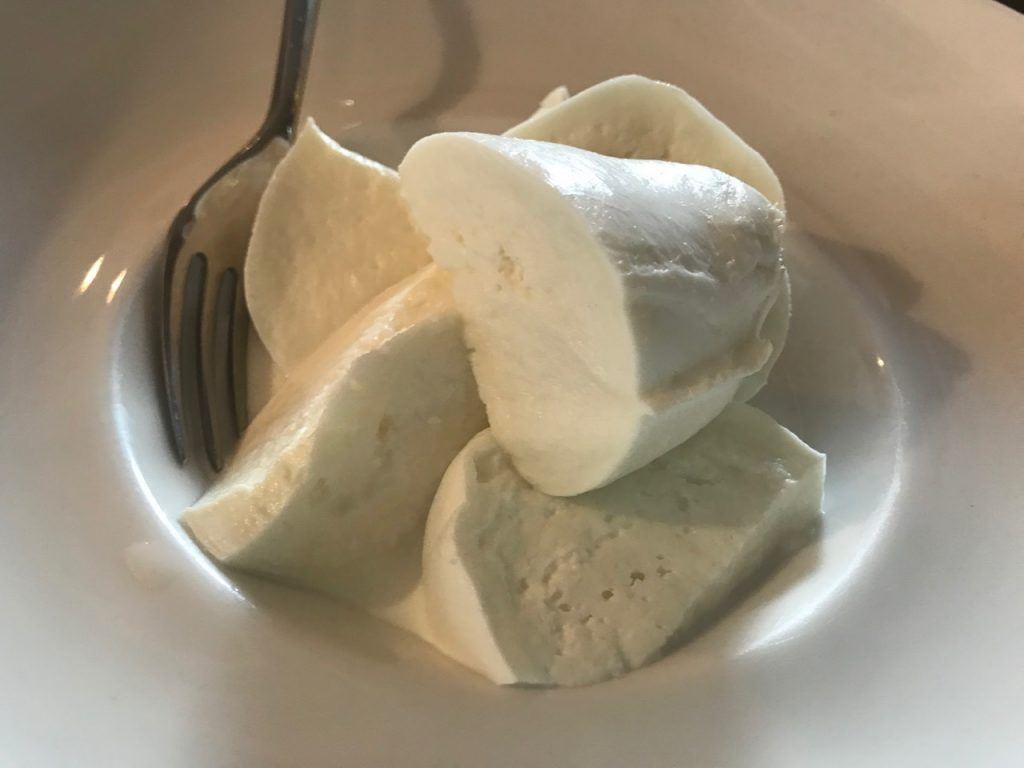
1. Mozzarella
Perhaps the most famous of the Italian cheeses, mozzarella is a soft white cheese originating from the Campania region. It’s produced using the pasta filata, or stretched-curd, method of production. Traditional Italian mozzarella cheese is made from buffalo milk, however, many producers now opt for cheaper cows milk instead. For the highest quality Italian mozzarella, you should still keep an eye out for Mozzarella di Bufala Campana PDO. It’s much creamier and more flavourful than the cow’s milk variety.
Use for: Mozzarella is most commonly used as a pizza topping, but can also be enjoyed on its own, as a filling in many Italian sandwiches, or as a vital component of a Caprese salad.
2. Stracciatella
Stracciatella is another fresh, soft Italian cheese with a rich, buttery taste and liquidy texture. The name comes from the Italian word straccia, which means ‘rag’ or ‘shred’, as it is made by mixing pulled and shredded mozzarella curds with heavy cream. While some people see stracciatella as a byproduct of mozzarella, it’s actually an extremely popular (and delicious) cheese in its own right. The Italian cream cheese comes from the province of Foggia in southern Italy’s Puglia region. Just like mozzarella, traditional stracciatella is made from buffalo milk.
Use for: With its creamy consistency, stracciatella is best when spread onto a warm piece of bread or toasted crostini with a drizzle of olive oil. It’s great on top of bread for aperitivo (pre-dinner nibbles that go with Italian cocktails such as Aperol Spritz). Similar to mozzarella, it can also be used as a topping for pizzas, pasta and salads. Good to know: Stracciatella can also refer to a flavour of chocolatey Italian gelato and an Italian egg soup, so be sure not to get these three mixed up.
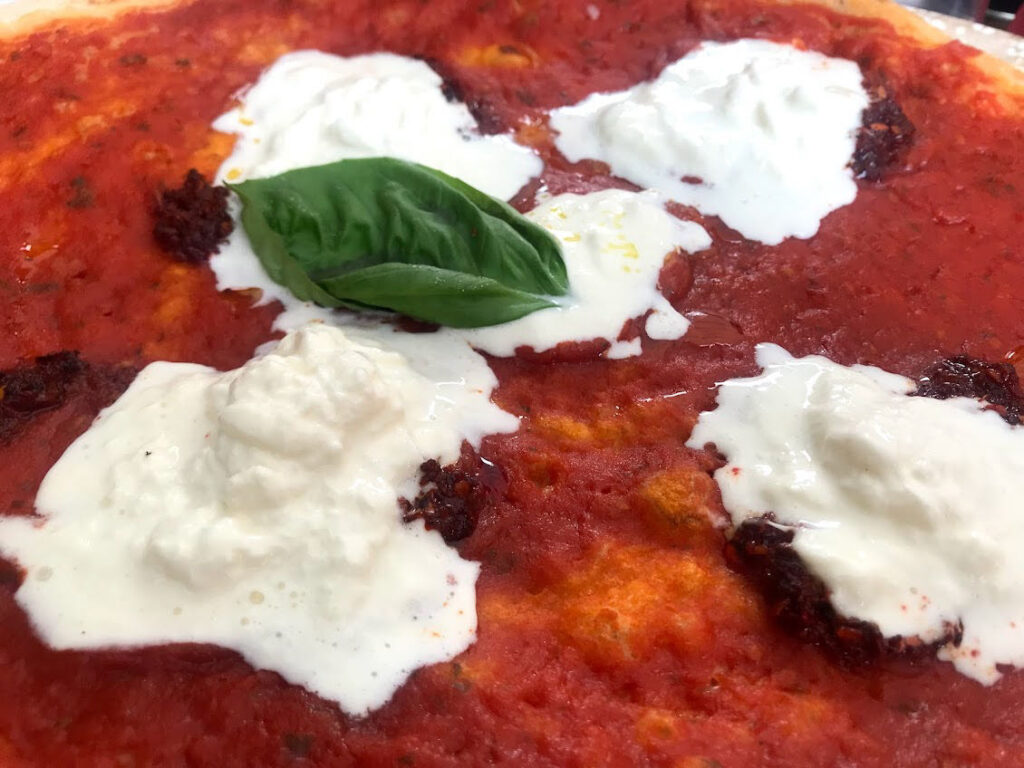
3. Burrata
From the outside, you could easily mistake burrata for fresh mozzarella. And you wouldn’t be too far wrong. The outer shell of the burrata is made from soft mozzarella formed into a pouch, while the inside is filled with stracciatella and cream. When you cut into a burrata, creamy cheese comes pouring out. Burrata is also a cheese that originates from southern Italy’s Puglia region, where it was rumoured to have been created by local farmer Lorenzo Bianchino in the early to mid-1900s. In 2016, the original Burrata di Andria was designated an IGP product, meaning its entire production must take place in the defined geographical area of Puglia.
Use for: Burrata’s rich, buttery flavour makes it a great addition to an Italian cheeseboard. It pairs well with cured meats, roasted vegetables, toasted bread and fruit marmalades. Like its two main components, mozzarella and stracciatella, burrata also works nicely in salads and pasta, or as a fresh piazza topping.
Wine pairing: Although many people typically reach for the red when pairing wine and cheese, Prosecco and cheese are a match made in heaven. Processo’s acidity helps it to cut through buttery, creamy cheeses. Try pairing a brut or extra-brut Prosecco with mild soft cheeses such as buffalo mozzarella, burrata, ricotta or gorgonzola.
4. Ricotta
Technically, ricotta is not actually cheese. At least not in the same sense that the others on this list are. Ricotta is a dairy by-product made from whey – the watery liquid left over after cow, sheep or goat cheese is made. However, you can refer to it as a whey cheese, so of course, we couldn’t leave it off of this list. Ricotta is made by reheating the leftover whey and straining the liquid from the curds – the name translates to re-cooked. The finished product is a popular Italian white cheese that has a mild, creamy flavour and crumbly texture. Ricotta is generally less salty than many other kinds of cheese and can even have a subtle sweetness to it.
Use for: Ricotta is perhaps the most versatile Italian cheese. It can be used in a variety of sweet and savoury dishes, from stuffed pasta and toast toppers to a creamy cannoli filling and even to make gelato.

5. Mascarpone
Mascarpone is one of the creamiest Italian cheeses. In fact, its texture is much more similar to that of a thick double cream than to most other cheeses. It is produced by heating heavy cow’s milk cream with acid to thicken, then straining it. This creates a smooth, spreadable cream cheese with a rich, creamy flavour.
Use for: Mascarpone is most famously used in the Italian dessert of Tiramisu, as well as other desserts such as cheesecakes and fruit tarts. Did you know Tiramisu was created in Treviso in northern Italy?
6. Casu Martzu
Not one that you’ll find on your average Italian cheeses list, but interesting to know about nonetheless, Casu Marzu is a traditional Sardinian sheep milk cheese that contains live insect larvae. Yes, we do mean maggots. It’s an Italian delicacy that supposedly tastes like strong gorgonzola. The bad news is, even if you were feeling brave enough to try Italian maggot cheese, it’s now illegal in all of Italy and across Europe due to how dangerous it is to consume. If you don’t chew it well enough, the live maggots can end up in your intestines. And nobody wants that.
Use for: Nothing. Unless you have contacts in the Italian cheese black market, you won’t be able to get your hands on it anyway. Also: maggots, no thanks.
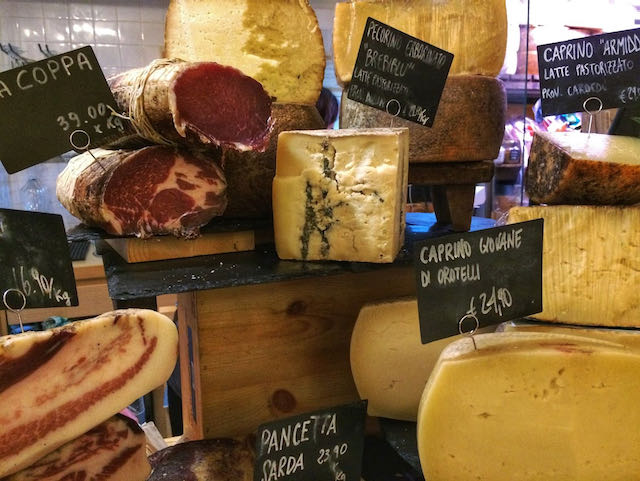
7. Gorgonzola
Gorgonzola is the most famous Italian blue cheese and is distinguishable by its greeny-blue veins, pungent smell and strong taste. Originally from the Lombardy region, its distinct flavour is created by adding bacteria to whole cows milk during the ageing process. There are two main types of gorgonzola depending on how long the cheese is aged for. Younger Gorgonzola Dolce is slightly sweeter and creamier, while Gorgonzola Piccante is aged for longer and produces a sharp Italian cheese.
Use for: Gorgonzola is most commonly used in pasta sauces and creamy risottos (gorgonzola, pear & walnut risotto is a must-try). It is also one of the toppings on a classic ‘Quattro Formaggi’, or four cheese, pizza. If adding gorgonzola to your cheese board, which we’d highly recommend doing, take it out of the fridge and let it come to room temperature before serving for a softer texture.
8. Fontina
Fontina is a semi-soft cheese that has been produced in northern Italy’s Aosta Valley since the 12th century. It’s another Italian cheese with DOP status, meaning it has to be made using milk from the region’s Valdostana cattle breeds and aged for at least three months in Valle d’Aosta’s natural mountain caves. Fontina is pale yellow in colour and has many bubbly holes in it. It has a complex sweet, earthy and nutty flavour which can vary depending on when the cows are milked and how long the cheese is aged for.
Use for: Fontina becomes extremely silky and gooey when cooked, which makes it a popular melting cheese (much like other Alpine cheeses). It’s often used to make Italian cheese fondue, served with chunks of toasted bread – a popular dish in the colder mountainous regions – or melted on top of chicken or steak.

9. Asiago
Asiago is an aged DOP cheese from northern Italy’s Asiago Plateau, located between Veneto and Trentino. The cheese-making tradition in this region dates back over 1,000 years, but it was only in the 19th century that cows milk replaced sheep’s milk in the cheese produced there. As with many Italian kinds of cheese, the texture and taste of asiago vary depending on how long it is aged. Asiago Pressato, or fresh asiago, is only aged for a month and is a smooth and mild cheese, whereas Asiago d’allevo, or aged asiago, can be aged for up to two years, which produces a crumbly Italian cheese with a sharper and nuttier flavour.
Use for: Fresh Asiago is often eaten alone or as part of a cheeseboard, while Aged Asiago can be used as an alternative to parmesan to grate on pasta, pizza or salad.
10. Scamorza
Scamorza is a southern Italian cow’s milk cheese made using the stretched curd pasta filata method, much like mozzarella. But while scamorza and mozzarella have the same base, scamorza is a drier, lower moisture cheese. The drier texture of scamorza is achieved by hanging, or ‘strangling’ as the Italians so nicely put it, the cheese with a rope and letting it lightly age for a couple of weeks. The ‘strangling’ is also what gives scamorza its characteristic pear shape. Scamorza can either be sold as it is or is lightly smoked to give it a mild smokey flavour.
Use for: You can substitute mozzarella for scamorza in most dishes, including on pizza and in salads. Smoked scamorza is also delicious when baked and served with toasted bread.
11. Provolone Valpadana
Provolone Valpadana is also made using the same pasta filata method as mozzarella and scamorza, but with a longer ageing process. There are two types of Provolone. Provolone Dolce, which is aged for 1-3 months and has a pale yellow colour and sweet taste. Provolone Piccante is aged for anything between 4-16 months and has a much sharper and spicier taste.
Use for: Provolone is often combined with mozzarella as a pizza topping to give a stronger taste. It is also a great melting cheese so can be used in grilled sandwiches or baked pasta dishes.
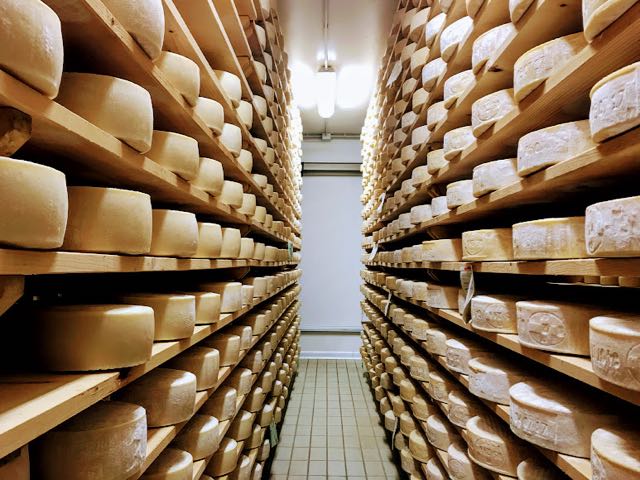
12. Parmigiano-Reggiano (Parmesan)
Another of the most popular Italian cheeses is Parmigiano-Reggiano, or as it’s more commonly known around the world, parmesan. So what’s the difference? While the name parmesan can be used for this particular type of cows milk cheese produced in the US, Australia or elsewhere in the world (except in Europe), Parmigiano-Reggiano DOP is highly regulated and must come from Italy’s Emilia Romagna region. Often referred to in Italy as the ‘King of Cheeses’, authentic Parmigiano-Reggiano has been produced and eaten in Italy since the Middle Ages. Parmesan is a flakey, hard cheese, with a strong fruity and nutty taste. It can be aged for anywhere between 12 months and 6 years. The longer it’s aged, the more intense the flavour grows.
Used for: Parmesan is a staple in Italian cooking and can be shaved on top of pasta, pizza, bruschetta, soup, omelettes, roasted potatoes, vegetables, salads…pretty much everything savoury and edible.
I’ve written a full guide – Parmesan Cheese and Its Italian Alternatives.
13. Grana Panado
Grana Panado is another hard Italian cheese made using cows milk, but this time from northern Italy’s Po Valley. Its production is predominantly based around the Lombardy, Piedmont and Veneto regions. While very similar to parmesan, Grana Panado is only aged for 9 months, so has a slightly more delicate and sweeter taste. It’s also known for its granular texture, with grana meaning grainy.
Used for: Similar to parmesan, Grana Panado is an excellent grating cheese with pasta, salads, roasted vegetables etc. Thanks to its slight sweetness, Grana Panado also works in fruity or nutty desserts, especially alongside figs and berries.
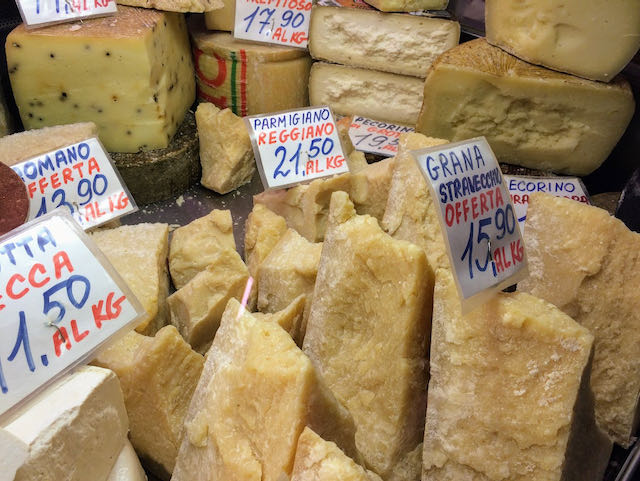
14. Pecorino Romano
Pecorino Romano is a hard, salty cheese made from Italian sheep’s milk. Originally from Italy’s Lazio region, Pecorino Romano is one of Italy’s oldest cheeses and was a staple in the diets of Roman soldiers. Today much of the production has moved over to Sardina, with several new regional variations being created, including Pecorino Sardo. Each regional cheese has its own slightly different flavour profile.
Used for: Pecorino Romano is most commonly used in traditional pasta dishes from Italy’s Lazio region, including Carbonara and Cacio e Pepe. It can also be used as an alternative for parmesan cheese in many other dishes.
That’s our guide to 14 types of Italian cheese everyone needs to know. Do you have a favourite Italian cheese? Let us know in the comments below. Want more? Wikipedia has a full list of all Italian cheese – be warned, there are hundreds of them.
Related Italian Food & Drink Articles
- 11 Best Italian Pastries (With Recipes)
- 12 Easy Prosecco Cocktails To Make At Home
- Classic Aperol Spritz Recipe (& Some Variations)
- 10 Top Italian Wines You Need To Know
- Ultimate Prosecco Food and Wine Pairing Guide
- What is Prosecco – Everything You Want To Know
- How to Buy Good Prosecco
- Prosecco vs Champagne: What’s The Difference?
- 14 Famous Italian Drinks To Try In Italy (Or At Home)
- 7 Simple Steps To Host a Wine Tasting at Home
Like this? Share it on Pinterest.
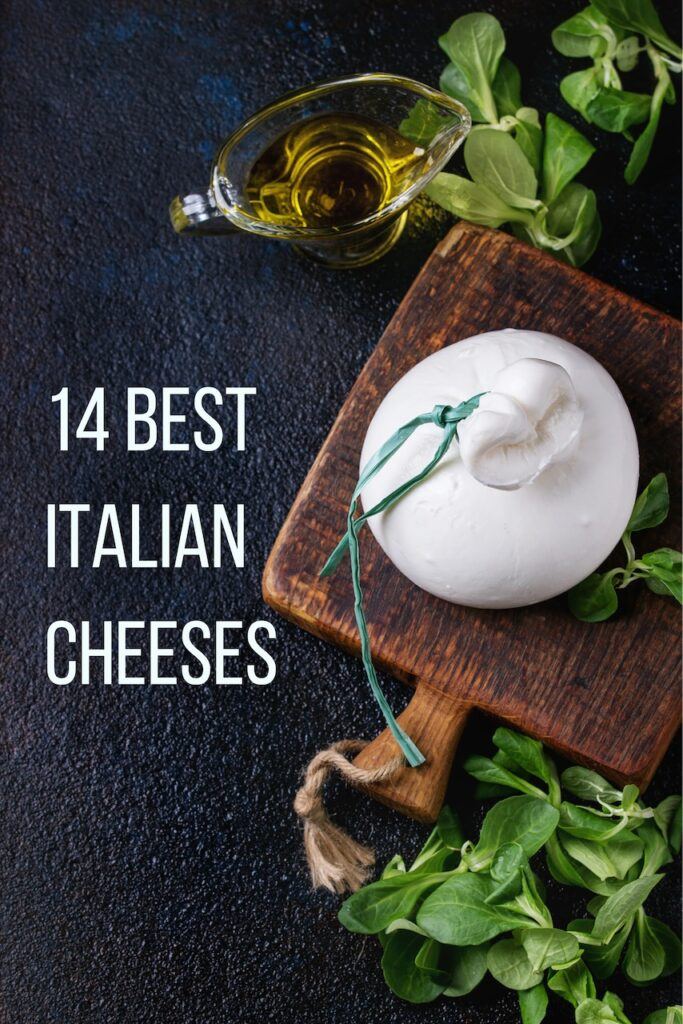

Your guides are excellent thanks!
Thanks!